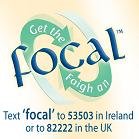
Something remarkable happened in Ireland seven years ago. This Republic introduced universal access to primary care for older people. When the medical card was extended to all over 70s, between reservations about how it was done and suspicions about why, many of us failed to notice that whatever the motivation or context, a big experiment had begun. It has taken the brutal ending of this experiment in public health to reveal its nature and the loss that will bring.
It is a question of our times: "What have we left after the the Celtic Tiger?" There is at least this one truly heart-warming answer. During the boom years we achieved a much healthier, older population. We made enormous inroads into reducing the disabilities associated with ageing. This is a well-founded assertion. The evidence is in.
For the first time, in the census of 2002, the population was asked about disabling conditions. The expected picture emerged of a rising proportion of people experiencing disability as they aged. A minority – 17% – had some disability at age 65. By age 75 nearly a third – 29% – had some disability. Among people aged 90 and over, 76% had some disability.
But then in the census of 2006, the same questions provoked startling answers. A higher proportion of 65-year-olds were reporting disability – 18.4% – and a greater proportion of younger people in general. But from the age of 72 and over fewer people were experiencing disability. And with every year of greater age the improvement in health had been more dramatic. So, in 2002, 42% of 80-year-olds had some disability; in 2006 this had dropped to below 38%. The proportion of 86-year-olds with a disability had dropped from 61% to 52%; for 90-year-olds it dropped from 76% to 67%. This is tangible change in the lives of Irish people.
The census breaks it down to conditions. In 2002 35% of people aged 90 and over were blind or deaf or had a severe vision or hearing impairment. Four years on this was true of fewer than 30%. In 2002 38% of people aged 90 and over had difficulty in learning, remembering or concentrating, four years later this too had dropped to under 30%.
How did this happen? Can it be coincidental that this record provided by the two censuses coincides with the period when everyone aged 70 and over had access for the first time to free drugs, to GP visits – which might be preventative in nature, not deferred until illness – and to the full, free services of occupational therapists, physiotherapists and public health nurses?
The implications are enormous. Many more older people can live full, independent lives. Human happiness has certainly increased. While the budgetary balance sheet fails to record such intangibles, a true cost-benefit analysis of the cost to the exchequer of extending medical cards to all over 70s should take into account the long-term benefits of reduced disability, particularly the substantial savings over a long period because of reduced need for long-term care. There has to be some reason why our European neighbours take free access for young and old to primary care for granted and are astounded that we charge for it. Could it be they know this is how public health improves and see that as a goal which economic growth is designed to achieve?
The Taoiseach defends ending universal medical cards for over 70s on the grounds that public spending should be targeted to those most in need. There is another way of viewing this. Universal medical cards are a form of targeting of public spending just like universal national school education.
With each, spending is targeted on what society values. Of course people on higher incomes should pay more for public services but the European way to achieve that is via tax or social insurance, so that we collectively fund services according to our ability to pay but, crucially, access them equally according to need.
No matter how high the income of a person, young or old, they should not fear illness, or the costs that it will bring. Without medical cards, many public services are really not on offer. To remove access to them for those on higher pensions is to remove access to forms of care essential for every frail, older person. As in many spheres of public service, private may not be better nor even available. That is why we do not tell higher-earning parents their children may no longer enrol in national schools.
Why doesn't Fianna Fáil get it about universal health care? In the 1940s, Fianna Fáil governments supported it. Fianna Fáil introduced legislation in 1947 to give universal free primary care to children. Only after they lost power in 1948 was the Mother and Child scheme defeated. Has Mary Harney forgotten the PDs supported national health insurance in 1989?
Governments need to understand their failures but also their successes. Congratulations Micheál Martin and Bertie Ahern, you revolutionised healthcare for older people. Now beg your colleagues to recognise the value of your achievement.
Maev-Ann Wren is author of 'Unhealthy State' (New Island, 2003) and co-author with Dale Tussing of 'How Ireland Cares' (New Island, 2006). The census findings on disability can be accessed via www.cso.ie/census/




 del.icio.us
del.icio.us digg
digg Facebook
Facebook








Excellent piece by a national treasure. Ms Wren shows the immense value of universality of health care entitlements.
One of the most galling aspects of the targeting of the over-70s to save €100m is that the €100m NTPF gravy train for private hospitals has escaped completely. It is well known that many of the country's private hospitals would be in serious trouble without the NTPF.
Reducing expenditure on the NTPF would have been one of several health care ‘cuts’ considered by the government, but cutting the medical card for over-70s is what it chose. Above all else, bail out the boys. Maintain the illusion that the private hospital sector is efficient and cost effective, rather than invest in the public hospitals so that they can deal, in a timely manner, with the patients that were referred to them. And spin it so that it looks like the medical card money was only going to doctors for doing nothing very much anyway. In this analysis, spending money on GPs is the same as wasting money. (On the contrary, the evidence in the medical literature is that expenditure on primary care offers the best value for money in health care - much more so than expenditure in the acute services). But do not, under any circumstances, dare to mention or to threaten the extravagant profligacy of NTPF money (€100m) being doled out to the beloved private hospitals and investors.
It’s not as if all of the cases being dealt with by NTPF are exactly high priority - only 44% of those offered outpatient consultations on the NTPF bothered to take up the offer and only 17% required any surgery. The annual reports of the €100m endowed NTPF are a complete disgrace, thick with self-congratulation but exceedingly thin on meaningful data. They make no attempt whatsoever to provide any information on value for money or any comparison with the cost of the same treatments if they had been carried out in the public hospitals. The sum of money involved in 2007 was €92m and the number of in-patients treated was 22,000.
This year, the Regional Maternity Hospital, Limerick, will provide comprehensive maternity care to some 6,000 mothers of all levels of clinical complexity on a budget of a mere €18.5m (and this includes the neonatal intensive care of many extremely preterm babies, some born as early as 24 weeks and the cost of whose care can amount to over €0.5m per baby).
The maternity hospitals in this country continue to struggle to provide a decent level of care on very miserable budgets. And for the second year running, despite huge increases in the number of births (44% in a decade), not an extra red cent has been provided in the budget to improve them.
Will pregnant women have to descend on the Dáil, along with the pensioners, before anything will be done? And descend they should. We have indulged and put up with this type of messing for far too long.